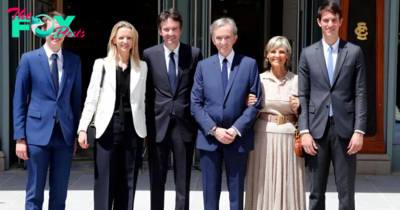Lifestyle
Child’s Play It Ain’t: Why You Should Invest in Toys
Toys and collectibles have surged both in popularity and value, as millennials become the biggest spenders. Toyzone owner Raymond Wong and avid collector Edward Chiu tell Prestige why we’re seeing this phenomenon, and how to tap into this economy.
For the first time ever, adults spent more on toys this year than young people. According to market-research firm Circana, in the first quarter of 2024 the expenditure on toys and similar collectibles by people aged 18 and above was US$1.5 billion – and in the past 12 months, 43 percent of adults bought a toy for themselves.
The increased demand has also translated to price surges, especially in the resale market. In June, a Rocket-Firing Boba Fett action figure from Kenner’s early Star Wars series sold for a record US$525,000 at Heritage Auctions, surpassing a diamond necklace-wearing Barbie doll that fetched US$302,500 at Christie’s in 2010. If those numbers don’t impress you, then perhaps the sale of a late-’90s Pikachu Illustrator Pokémon card will. Only 20 of the cards were made, one of which was bought by YouTube personality Logan Paul for $5.275 million in 2022.

According to James Zahn, editor in chief of The Toy Book, the recent pandemic also played a big role in the resurgence of toys. “During the pandemic, when people were flush with cash and had time to spend at home whether with their families or alone, they wanted to reconnect with the toys that made them happy as kids,” he says.
Although Zahn reckons the increased demand was in the last few years, in Hong Kong, the toy and collectibles market has flourished for decades, entering the mainstream in the early the 2000s. Hong Kong-based Hot Toys, for example, has become so successful at creating high-end sixth-scale figures in partnership with global franchises such as Marvel, Star Wars and DC Comics during the past two decades that entire secondary Businesses have been built around it. Resellers fight over stock in Hong Kong just to sell it to collectors in the US or Europe for more than double the retail price.
As the apparent ubiquity of digital gadgets in the past two decades led us to believe that physical toys are no longer coveted, why are we seeing this revival? Raymond Wong, the owner of Toyzone, one of Hong Kong’s biggest toy stores, says it’s all about nostalgia.

Wong, who grew up in government housing estates, says his parents couldn’t afford to buy him toys when he was young. So when he eventually got his first job as a car salesman, he filled a void he’d had since childhood by spending his first pay cheque on diecast model cars. Eventually, this hobby became such a big part of his life that he quit his daytime job and began running a toy Business entirely, buying and reselling rare collectibles. Business was so lucrative that what started as a 70-square-foot store eventually turned into a 10,000-square-foot retail space in Shau Kei Wan, one of the biggest toy stores in the city.
“Most of my clients first started collecting because of Japanese culture,” he explains. “They have a very strong cartoon, anime and television industry that spawns many toy lines, and the generations up to millennials grew up with exposure to those media. Now that they have disposable incomes, they buy back everything they missed out on as kids.”

Avid toy collector and High Snobiety editorial advisor Edward Chiu concurs. “When I got a job after I graduated, at last I was able to buy the things I missed out on when I was a kid. Or maybe it’s something that was damaged back in the day and you want to replace it, like my Micro Machines Star Wars collection.”
Chiu’s first purchase of a series of figures from designer Michael Lau’s Gardener series snowballed into everything from all-black KAWS statues and vibrant Hot Wheels cars to a fleet of Star Wars Tie Fighters and myriad Hot Toys villains. There’s a bit of everything, and that’s what makes Hong Kong such a great market for investing in toys.

“Hong Kong has plenty of stock for almost any franchise you can think of. Manufacturers just love importing here,” Wong explains. “Asia in general has a very big market for toys, and many people from neighbouring countries come to buy toys here, because we don’t have sales tax. I’ve had a lot of clients from Singapore, Malaysia, Thailand and the Philippines fly over just to look for something they’re missing in their collection. Mainland China is also on the rise now, because they have very few imports domestically. Even Dubai is up and coming – and, as you’d expect, they have immense budgets.”
Seven years ago, a Filipino collector bought one of Wong’s Japanese Robocon figure collections for HK$800,000, and now he’s seeing increasing interest from the mainland market as well. And, just as the report from Circana suggests, we’re seeing growth across all sectors in the market and not just specific franchises.
“Many people are looking for vintage series like Kenner nowadays,” Wong tells me. “Franchises like He-Man, Star Wars, GI Joe never go away. And another reason why they prefer older collectibles is because the materials used were much better then. Nowadays, they’re looking closely at their profit margins, so many companies cut corners with certain materials, like using faux leather, and inevitably they start to flake and fall apart after a few years. With vintage collectibles, you rarely have this problem

“That said, a lot more different series are selling well now, and I’d probably attribute that to increased interest from mainland China,” Wong adds. “They rarely have anything up there, so now that collecting has become popular, they’re starting to really dive deep and buy up everything. They’re even buying Barbies now because of the recent film.”
Even if you do figure out which franchises and series to collect and invest in, finding something special requires research. Unlike watches, jewellery or rare cars, toys and collectibles are mostly mass-produced, so popularity alone won’t guarantee a return on investment. If you’re looking to make it big, you’ll need to look into the story behind a particular piece, like Chiu’s life-sized Astro Boy statue.
“I actually got this Astro Boy from Toyzone,” he says after I tell him of my earlier conversation with Wong. “It was wrapped in plastic standing in the corner, with a bunch of other Astro Boys. I saw this, and I thought it looked really familiar, so I went home to do some research. Then it all clicked: when I was a kid and I was watching the DVD on [Kenzo art director] Nigo’s home, that was the statue he had.

“I also remembered that I had a recent Sotheby’s catalogue at the time on Nigo’s auction, which was taking place in Hong Kong, so I flipped through it and, lo and behold, I found that exact Astro Boy. I looked at the markings on the one in the book and compared it with the ones on the figure in Toyzone, and they matched. It was exactly the same. When I realised that, I called Raymond up immediately and told him I’d buy it.”
Knowing the market and digging deep about a certain collectible will increase your chances of success, but like any other form of investment, there’ll always be risks involved. The expert advice? Buy what you enjoy.
“At the end of the day, buy what you like and what means something to you,” Chiu says. “I never buy something solely to sell for profit. For me, it’s about buying back the memories of my childhood, and enjoying what I own now.”
Wong agrees. “Buy what you love,” he says. “Don’t buy it purely for the sake of flipping and reselling. Toys have always been about enjoyment and passion, so always buy something you have a connection with. Even if you don’t manage to sell it or earn money from it, at least you’ll have a special piece that you relate to and reminds you of your happy memories.”
-
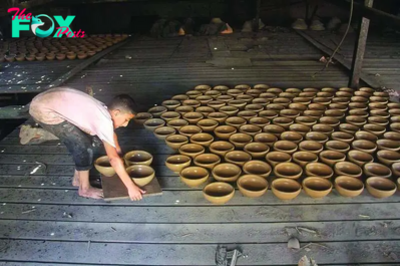
 Lifestyle39m ago
Lifestyle39m agoGazans turn to pottery amid shortages | The Express Tribune
-

 Lifestyle39m ago
Lifestyle39m agoBlasts at rapper Badshah's club tied to Bishnoi gang | The Express Tribune
-
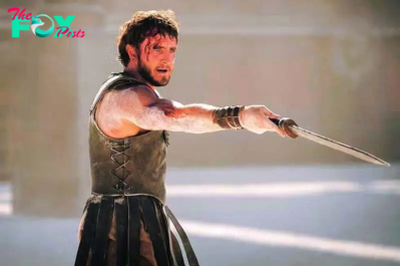
 Lifestyle5h ago
Lifestyle5h agoGladiator II' makes $106M in global box office | The Express Tribune
-

 Lifestyle5h ago
Lifestyle5h agoA journey through the kitchen | The Express Tribune
-
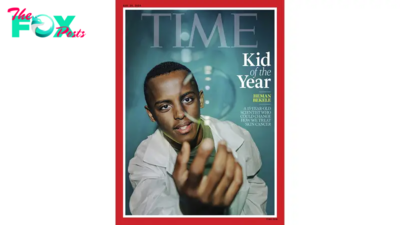
 Lifestyle9h ago
Lifestyle9h agoHow We Chose TIME’s 2024 Kid of the Year
-
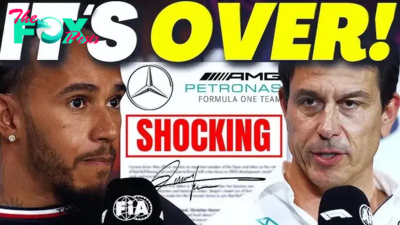
 Lifestyle9h ago
Lifestyle9h agoF1 NEWS: Hamilton Shows NO MERCY Towards Mercedes & Wolff After SABOTAGED Las Vegas GP!.cau
-

 Lifestyle9h ago
Lifestyle9h agoMy Downstairs Neighbor Asked Me to Be Quieter at Night, but I Have Not Been Home for the past Week
-

 Lifestyle11h ago
Lifestyle11h agoJin steps out of the BTS hive with 'Happy' | The Express Tribune
